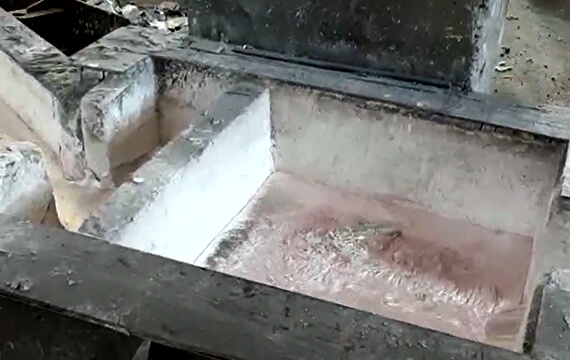In the modern automobile industry, aluminum alloy wheels have become standard configuration for passenger cars due to their excellent strength-to-weight ratio, good heat dissipation performance and beautiful appearance design. As a key safety component in the automobile driving system, the quality of the wheel is directly related to the vehicle’s handling, fuel economy and driving safety. This article will systematically introduce the complete manufacturing process of automobile wheels, focusing on the technical points of low-pressure casting, a mainstream production process, and explore how to improve the quality and performance of wheel products by optimizing the process parameters of each link.
Overview of automobile aluminum alloy wheels
Development history of wheel materials
Automobile wheel materials have undergone an evolution from steel to aluminum alloy. Early cars generally used steel wheels, and it was not until the 1960s that aluminum alloy wheels began to be used on high-end models. With the advancement of casting technology and the reduction of costs, aluminum alloy wheels have now become standard configuration for most passenger cars.

Advantages of aluminum alloy wheels
Compared with traditional steel wheels, aluminum alloy wheels have the following significant advantages:
- Weight reduction of about 30%, reducing unsprung mass and improving vehicle handling
- Better heat dissipation performance and extending the service life of the brake system
- More possibilities for styling design
- Excellent corrosion resistance
- 100% recyclable, meeting environmental protection requirements
Classification of automobile wheels manufacturing processes
Currently, the mainstream aluminum alloy wheel manufacturing processes include:
- Low pressure casting (LPDC)
- Gravity casting
- Forging
- Spinning casting
Among them, low pressure casting occupies about 70% of the market share due to its good economy and product quality, which is the focus of this article.
Detailed explanation of low pressure casting process
Principle of low pressure casting
Low pressure casting is a process method between gravity casting and high pressure casting. The basic principle is to introduce 0.5-1.0 bar dry compressed air or inert gas into a closed insulation furnace, so that the molten metal can smoothly fill the mold cavity from bottom to top under low pressure, and crystallize and solidify under pressure.
Process Flow
The complete low-pressure casting process includes the following main links:
Raw material preparation
Select A356 aluminum alloy ingots that meet the GB/T 1173 standard, and its typical composition is:
- Si: 6.5-7.5%
- Mg: 0.25-0.45%
- Fe: ≤0.2%
- Total amount of other impurities ≤0.15%
After the raw materials enter the factory, they need to be tested for composition and appearance to ensure that there are no surface defects such as oil stains and rust.
Melting Process
The smelting process is carried out in a gas-fired or electrically heated insulation melting furnace, and the temperature is controlled in the range of 700-750℃. Modern wheel hub factories generally use double-chamber melting furnaces, one furnace chamber is used for melting and refining, and the other furnace chamber is used for standing and heat preservation to achieve continuous production.
Special attention should be paid during the melting process:
- Use covering agent to prevent aluminum liquid from oxidation
- Strictly control the melting time (usually no more than 4 hours)
- Regularly clean the bottom of the furnace deposits
- Monitor the hydrogen content of the melt (target value ≤ 0.15ml/100g Al)
Melt treatment
Melt treatment is a key link to ensure the quality of castings, mainly including:
Refining and degassing
Using the rotary blowing process, high-purity argon gas is introduced into the aluminum liquid through the graphite rotor. The bubbles absorb hydrogen atoms and inclusions during the rising process to achieve the purpose of purification. Typical process parameters:
- Argon flow rate: 10-15L/min
- Processing time: 8-12 minutes
- Rotor speed: 400-600rpm
Filtration and purification
Set up alumina ceramic foam filters in the casting system to effectively remove inclusions in the melt. Main parameters of the filter:
- Material: high purity alumina (Al₂O₃≥90%)
- Aperture: 20-30PPI
- Porosity: 80-85%
- Preheating temperature: 300-400℃
Mold preparation
The automobile wheel casting mold is usually made of H13 hot working die steel, including:
- Upper mold (top mold)
- Lower mold (bottom mold)
- Side mold (usually 4 pieces)
- Mold core (forms the center hole of the wheel hub)
The mold needs to be preheated before use, and the temperature should be controlled within the range of 200-300℃. Insufficient preheating will cause cold shut defects, and too high preheating may cause sticking mold.
Low-pressure pouring
The pouring process is automatically completed by a computer control system, and the main process parameters include:
- Liquid lifting pressure: 0.1-0.3bar
- Filling pressure: 0.5-1.0bar
- Boosting pressure: 1.2-1.5bar
- Pressure holding time: 3-5 minutes (depending on the size of the wheel hub)
The entire pouring process requires precise control to ensure that the molten metal fills the cavity smoothly and avoids turbulence and air entrainment.
Cooling and mold opening
The casting is opened after cooling to below the solidus temperature in the mold. A water cooling system is usually used to accelerate cooling. When opening the mold, special attention should be paid to the synchronization of the ejection mechanism to avoid deformation of the casting.
Trimming and cleaning
Use a hydraulic trimming machine to remove the pouring riser and flash, and then clean the surface by shot blasting.
Heat treatment process
The wheel hub casting must undergo T6 heat treatment to achieve the required mechanical properties. The specific process is:
- Solution treatment: Heat the casting to 535±5℃, keep it warm for 4-6 hours, fully dissolve the strengthening phase, and then quickly water quench it.
- Aging treatment: Keep it warm at 155±5℃ for 4-6 hours to evenly precipitate the strengthening phase.
Conclusion
The manufacturing of automotive aluminum alloy wheels is a complex system engineering involving multiple disciplines such as materials science, mechanical engineering, and automatic control. With the advancement of technology and changes in market demand, the wheel hub manufacturing process will continue to innovate and develop in the direction of lighter, stronger, and smarter. As industry practitioners, we need to continue to learn and practice to promote the transformation and upgrading of the automotive parts manufacturing industry.


